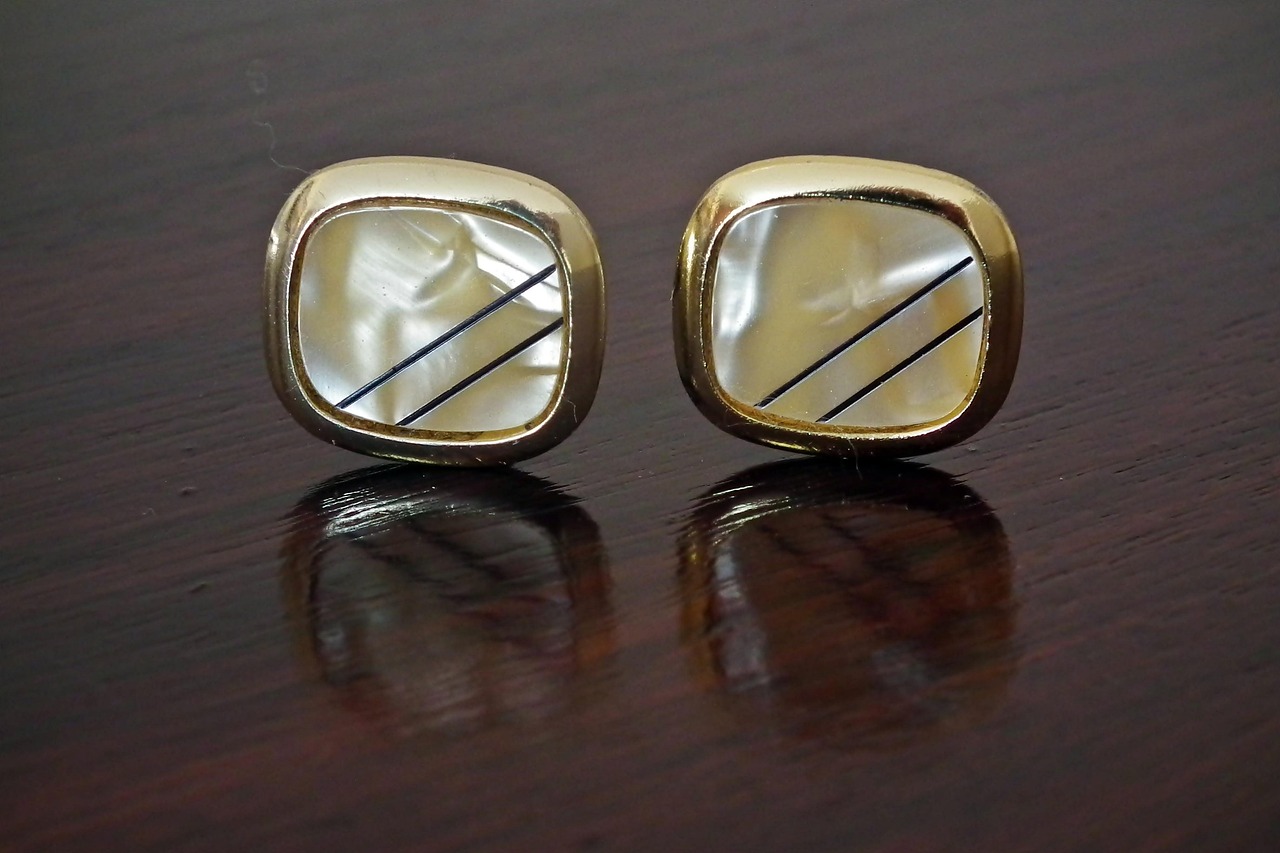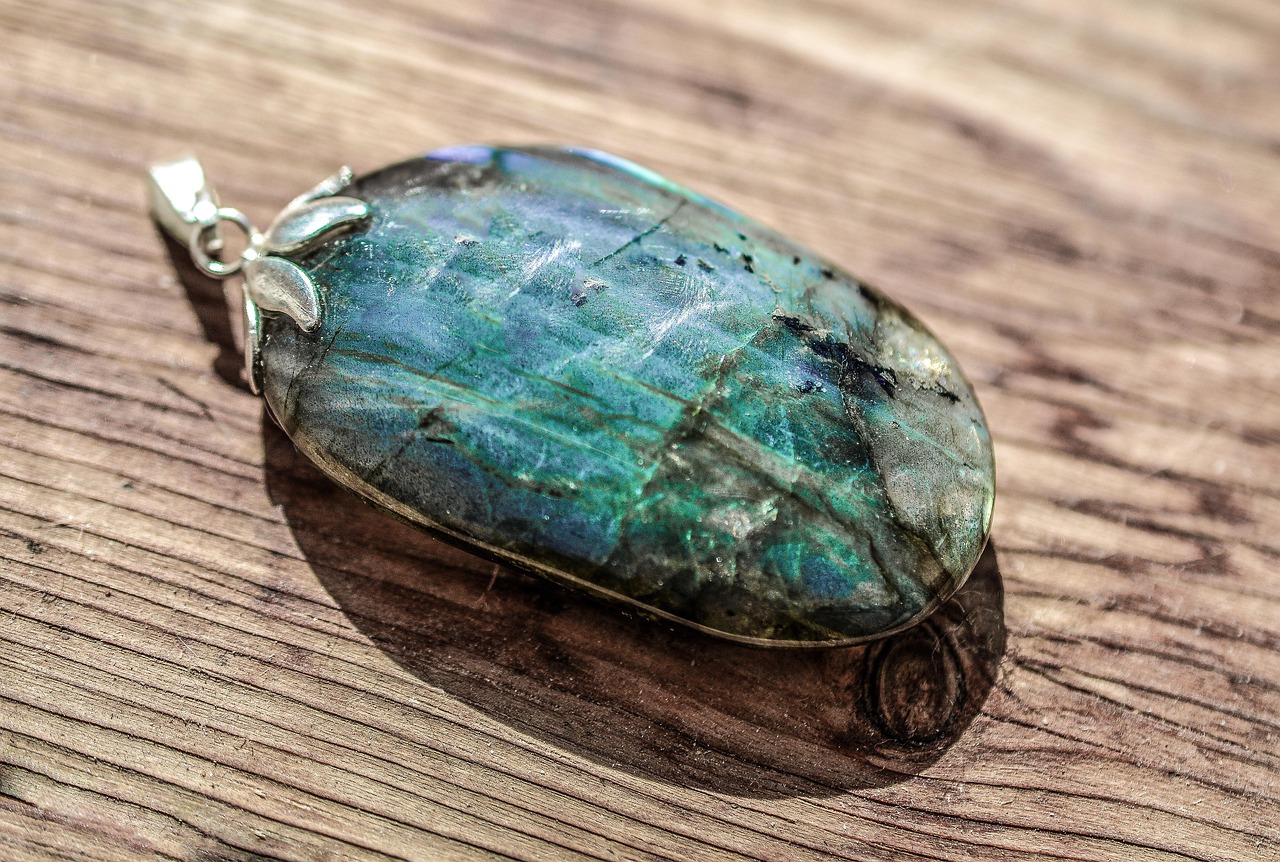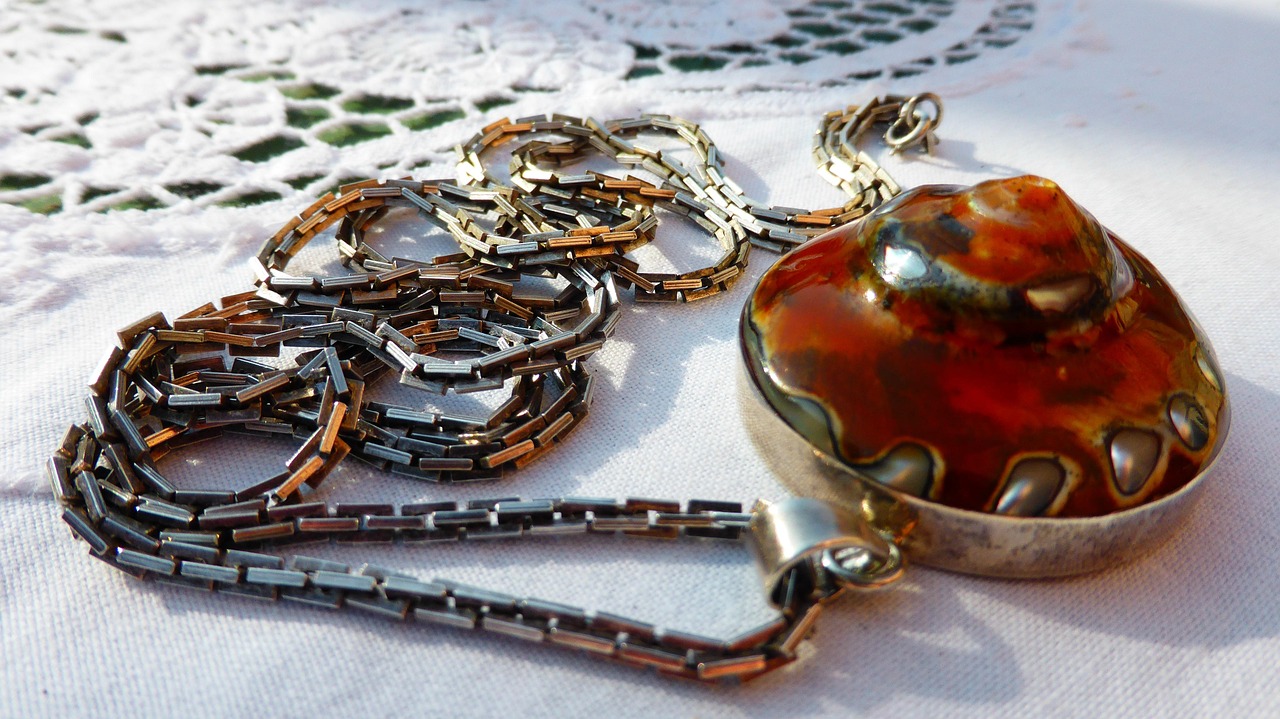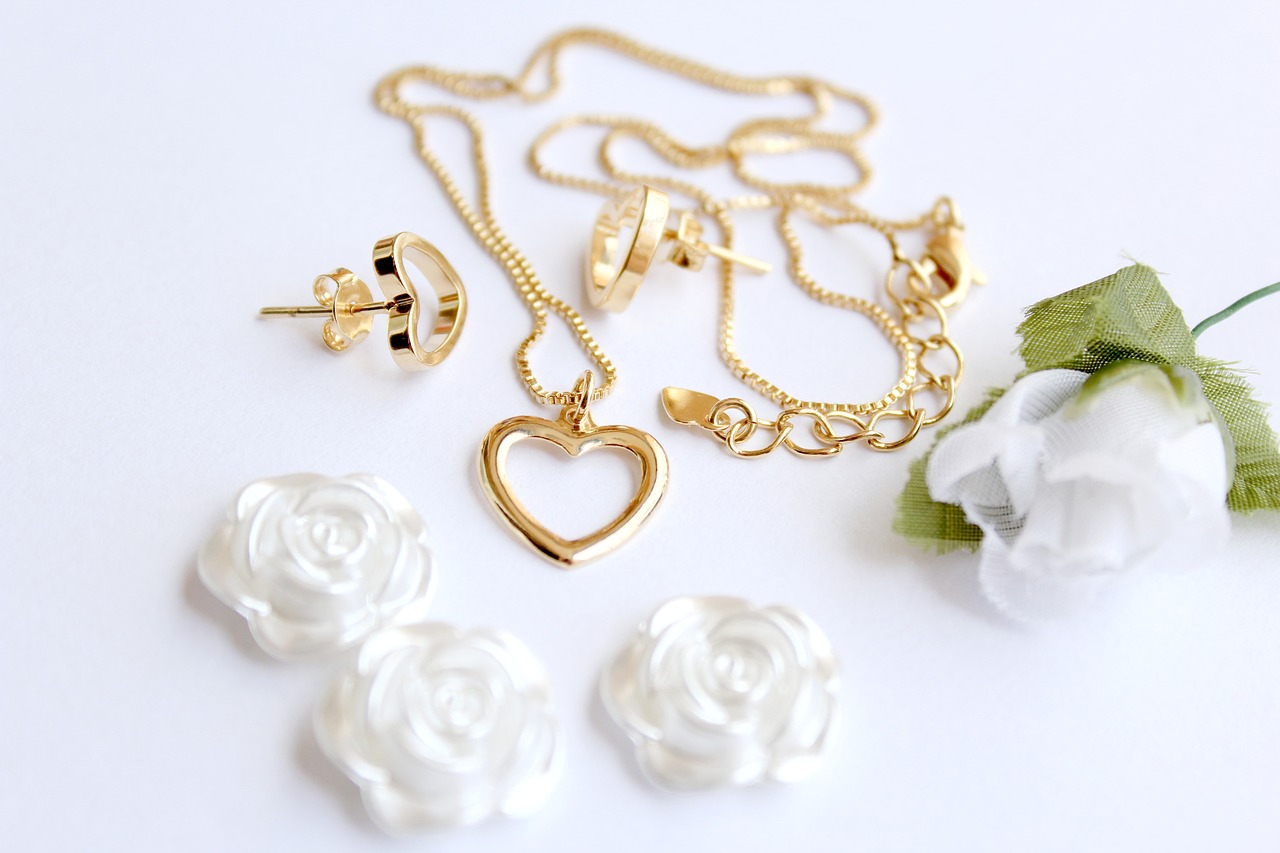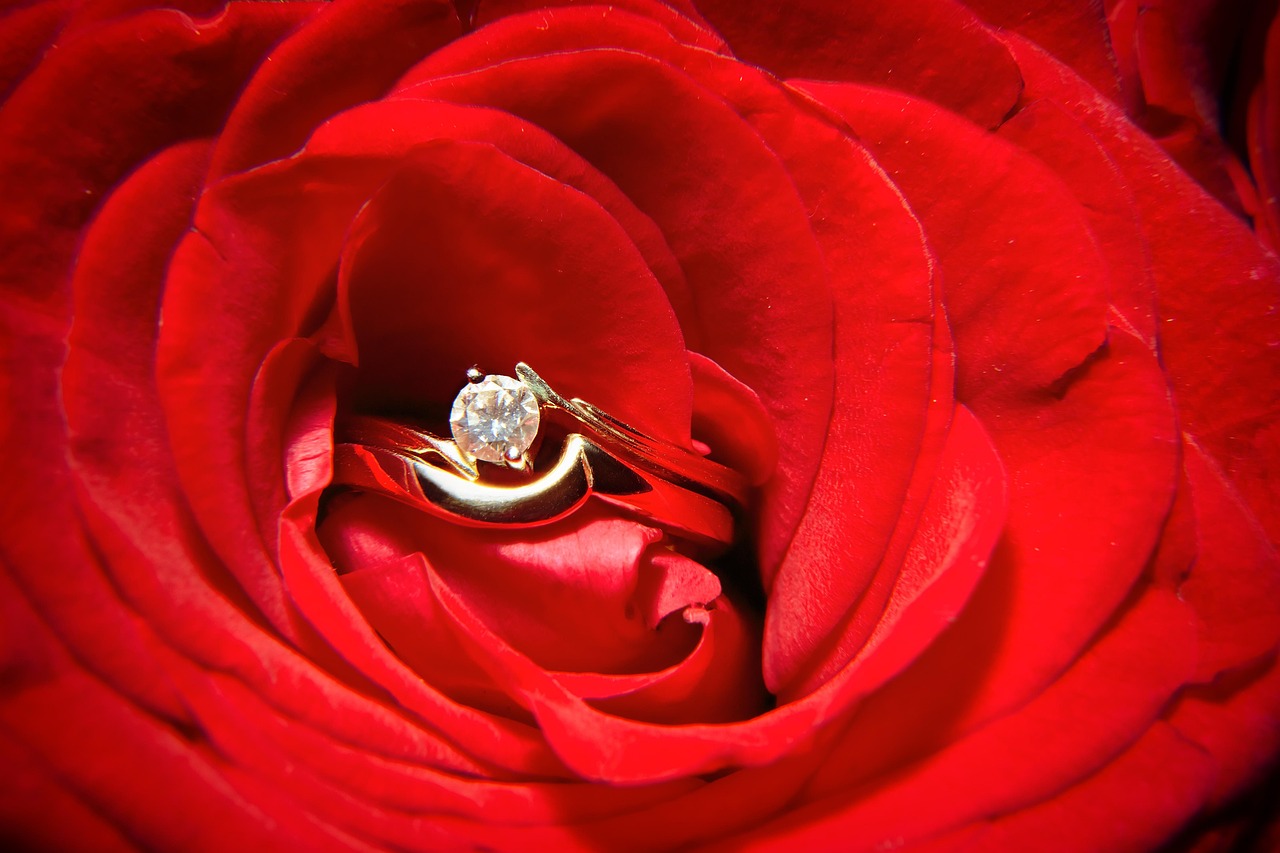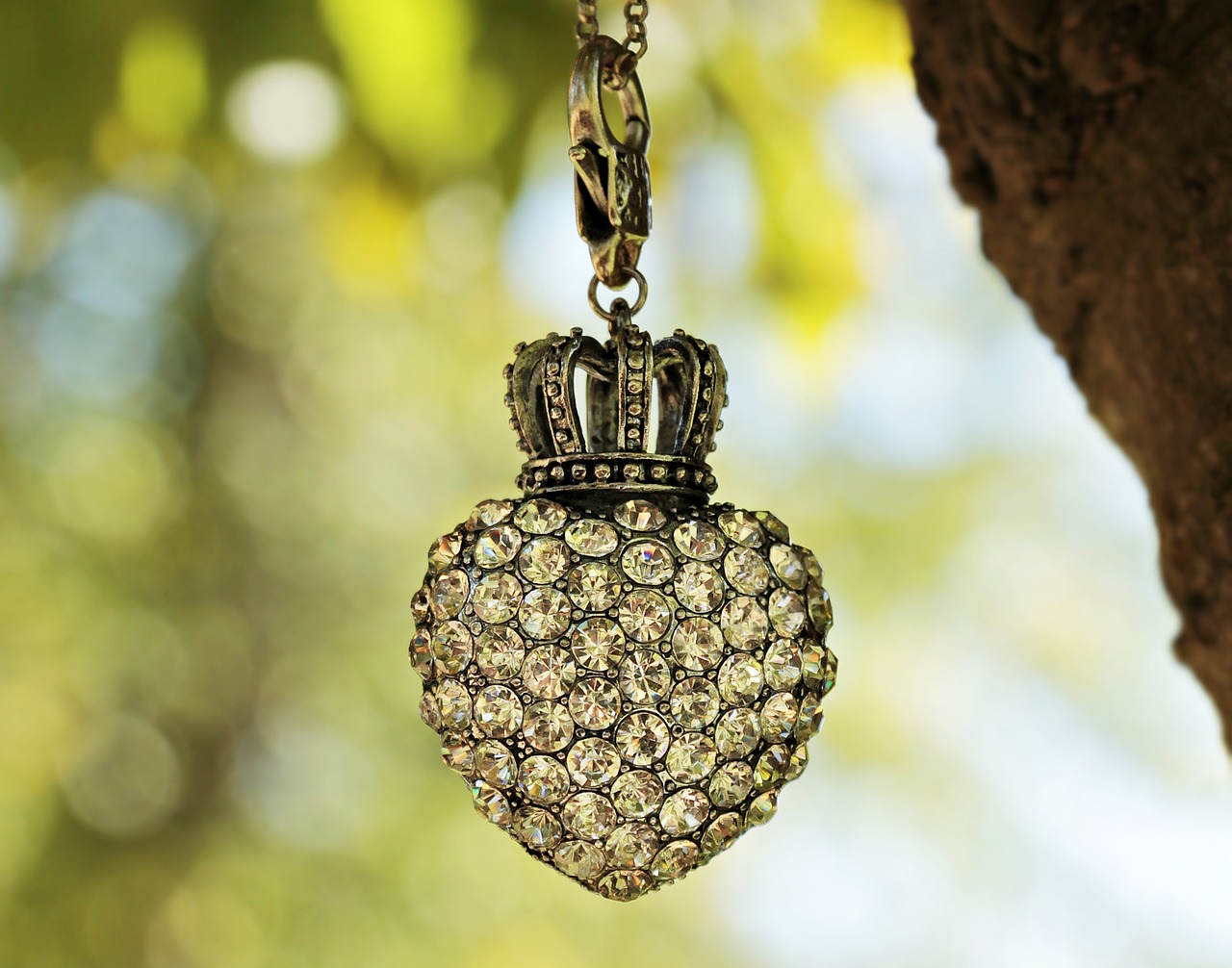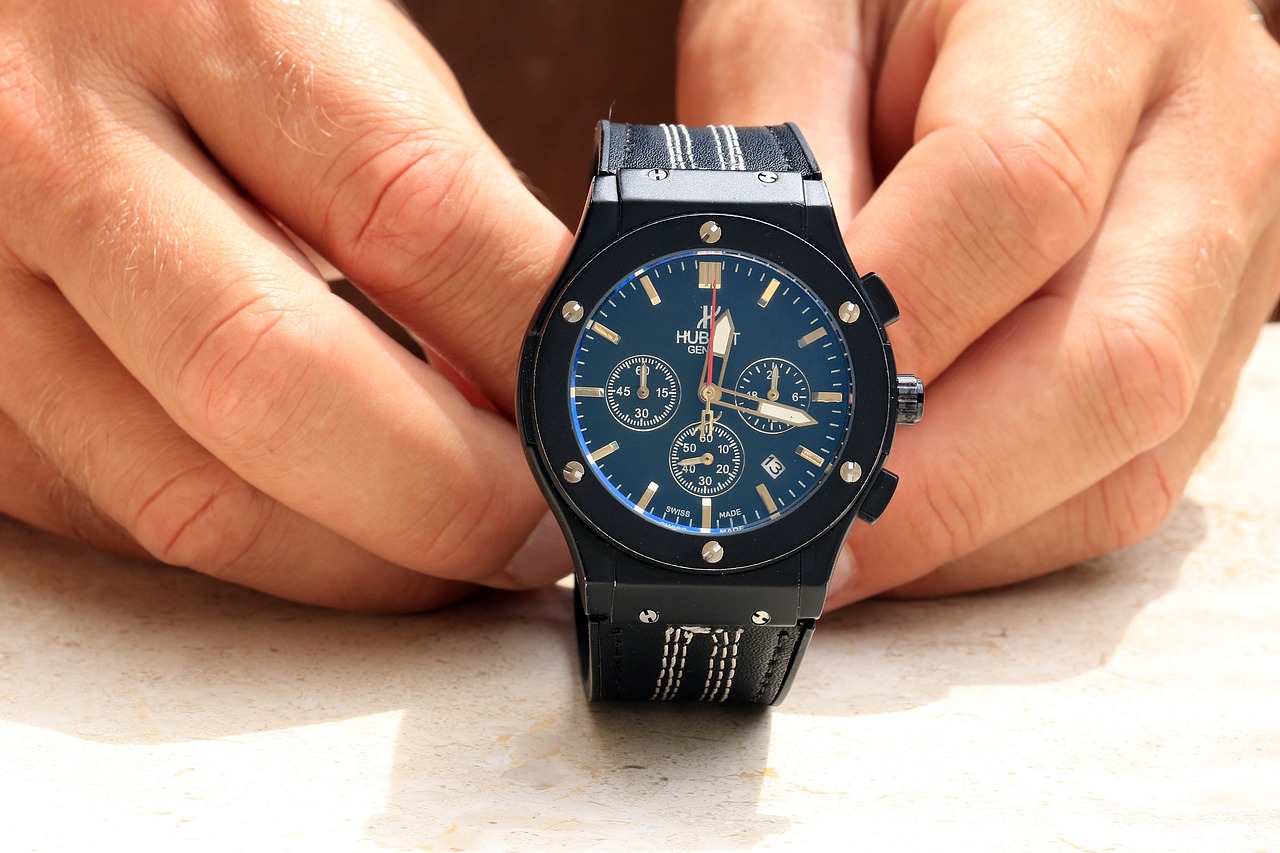This article provides insights on effectively selling used jewelry, covering valuation, market strategies, and tips to maximize your profits while ensuring a smooth selling process.
What Factors Determine the Value of Your Jewelry?
Understanding the key factors that influence jewelry value is crucial. Factors include:
- Metal Type: The value of gold, silver, or platinum can vary significantly based on current market prices.
- Gemstone Quality: The cut, clarity, color, and carat weight of gemstones play a vital role in determining value.
- Brand Reputation: Well-known brands often command higher prices due to their perceived quality and prestige.
- Market Demand: Trends can affect how much buyers are willing to pay, so staying informed is essential.
How to Get Your Jewelry Appraised?
Getting an accurate appraisal is essential for selling your jewelry at the right price. Here’s how to do it:
- Choosing the Right Appraiser: Look for certified professionals with positive reviews and experience in your type of jewelry.
- What to Expect During an Appraisal: Expect a thorough examination of your piece, including assessments of craftsmanship and condition.
Where to Sell Your Jewelry for Maximum Profit?
Identifying the best selling platforms can significantly affect your profit. Options include:
- Online Marketplaces: Websites like eBay and Etsy can reach a broader audience, increasing your chances of a sale.
- Local Jewelers: They may offer immediate transactions, though often at lower prices than online sales.
- Pawn Shops: Quick cash is possible here, but be prepared for lower offers.
- Auction Houses: Ideal for high-value pieces, they provide professional marketing to attract serious buyers.
How to Prepare Your Jewelry for Sale?
Proper preparation enhances appeal and value:
- Cleaning and Repairing: A simple clean can restore shine, while repairs can fix damage that might deter buyers.
- Creating an Attractive Presentation: Use quality photographs and attractive packaging to capture buyers’ attention.
What Legal Considerations Should You Keep in Mind?
Understanding legal aspects is vital when selling jewelry:
- Understanding Ownership and Provenance: Clear ownership documentation can enhance buyer confidence.
- Tax Implications: Be aware of potential capital gains tax on profits; consult a tax professional for guidance.
How to Negotiate the Best Price?
Negotiation skills can significantly influence your selling price:
- Understanding Market Trends: Stay informed about current trends to gauge appropriate pricing.
- Effective Negotiation Techniques: Be assertive but flexible; don’t hesitate to walk away from unsatisfactory offers.
What Are Common Mistakes to Avoid When Selling Jewelry?
Avoiding common mistakes can streamline the selling process:
- Underpricing Your Jewelry: Conduct thorough research to ensure your asking price reflects the true value.
- Neglecting to Market: Utilize social media and online platforms to broaden your reach and attract interest.
By following these guidelines, you can effectively navigate the jewelry selling process, ensuring you achieve the best possible price for your treasured items.
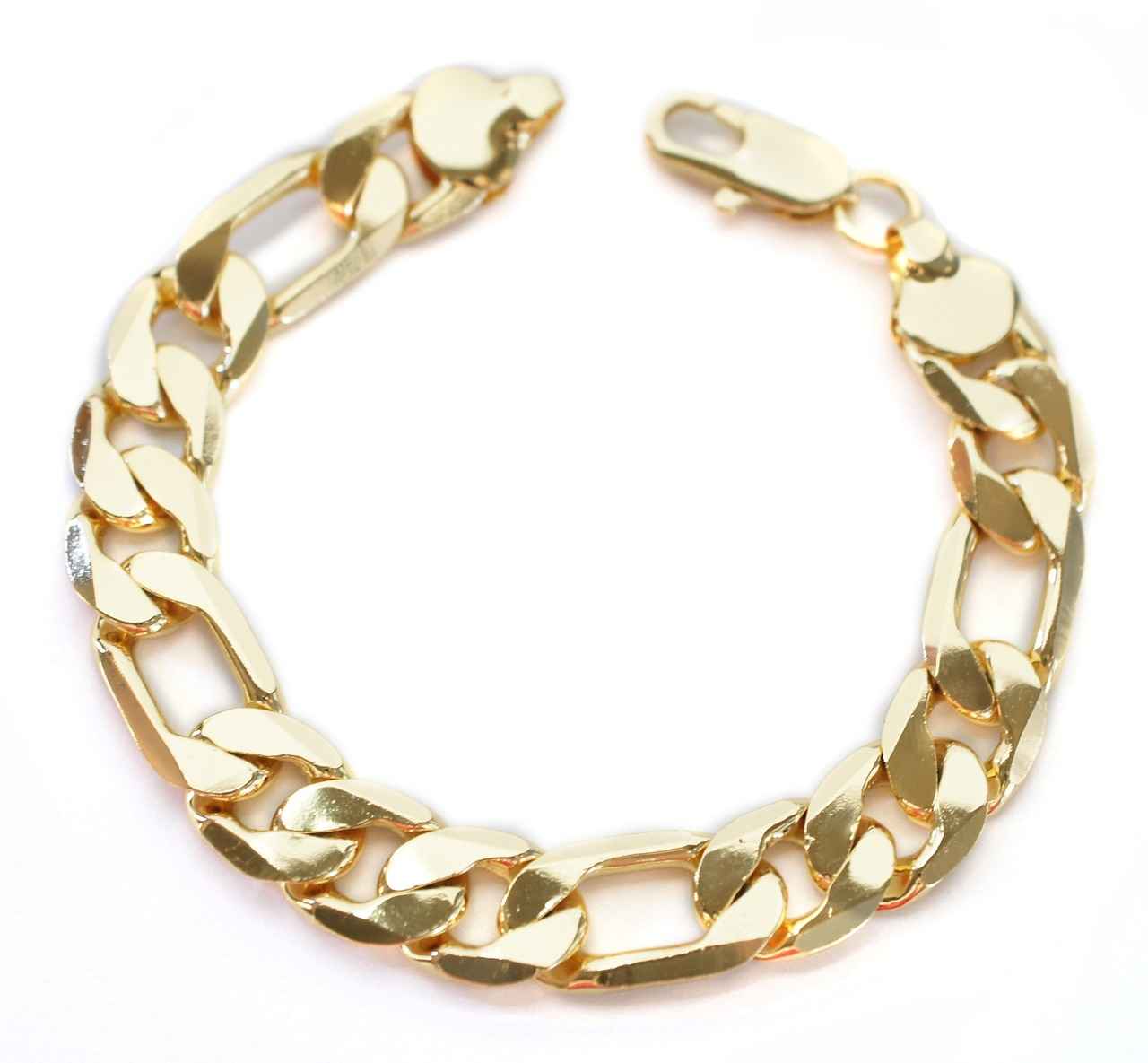
What Factors Determine the Value of Your Jewelry?
When it comes to selling jewelry, understanding the key factors that influence its value is essential for maximizing your profits. Various elements contribute to the overall worth of a piece, and being informed can help you make better decisions during the selling process.
Several critical aspects play a role in determining the value of your jewelry. Here are the most significant:
- Metal Type: The type of metal used in your jewelry significantly impacts its value. Precious metals such as gold, platinum, and silver are more valuable than base metals. The purity of the metal, measured in karats for gold, also affects pricing. For example, 24-karat gold is more valuable than 14-karat gold due to its higher purity.
- Gemstone Quality: If your jewelry contains gemstones, their quality is a major factor in valuation. Factors such as cut, clarity, color, and carat weight (the 4 Cs) determine a gemstone’s worth. High-quality gemstones, particularly rare ones like diamonds, emeralds, and sapphires, can significantly increase the overall value of the piece.
- Brand Reputation: The brand or designer of the jewelry can add considerable value. Renowned brands often have a loyal customer base and higher resale values. If your piece is from a prestigious designer, it can command a premium price in the market.
- Market Demand: The current market demand for specific styles or types of jewelry can fluctuate. Trends in fashion and consumer preferences can influence how much buyers are willing to pay. For instance, vintage or antique jewelry may see a surge in demand, increasing its value.
- Condition: The overall condition of the jewelry is crucial. Pieces that are well-maintained, free from damage, and have original packaging or certification documents tend to fetch higher prices. Conversely, items that show signs of wear may require repairs, which can decrease their value.
- Provenance: The history of ownership, or provenance, can also impact value. Jewelry with a compelling backstory or that belonged to a notable person may be more desirable to collectors, thereby increasing its worth.
By understanding these factors, you can better assess your jewelry’s value and make informed decisions when selling. Whether you aim to sell online or through a local jeweler, being knowledgeable about what influences value will help you maximize your profits.
In summary, the value of your jewelry is determined by a combination of its metal type, gemstone quality, brand reputation, market demand, condition, and provenance. Each of these elements plays a vital role in establishing a fair market price, ensuring that you receive the best possible return on your investment.
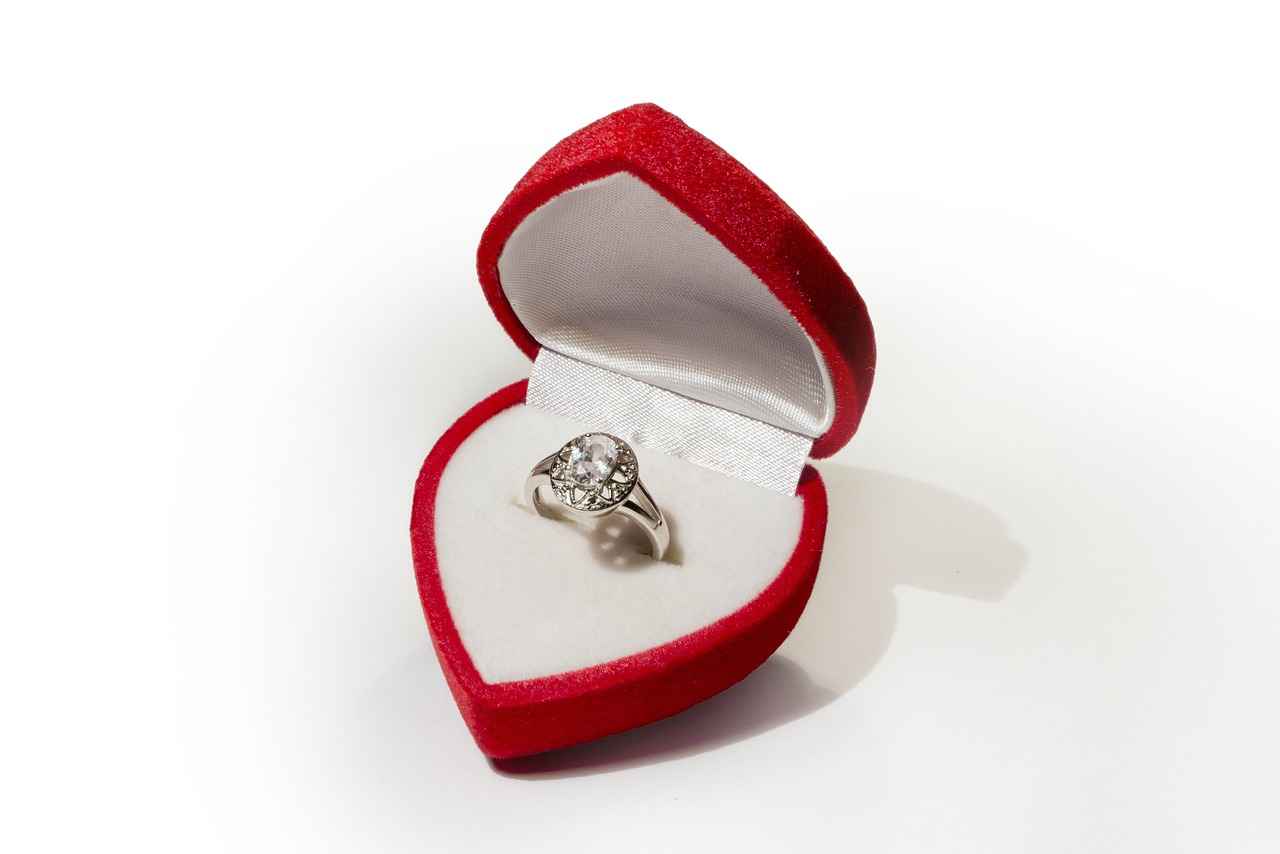
How to Get Your Jewelry Appraised?
Getting your jewelry appraised is a crucial step in the selling process. An accurate appraisal not only helps you understand the true value of your piece but also empowers you to negotiate effectively with potential buyers. Without a proper appraisal, you may risk undervaluing or overpricing your jewelry, which can lead to lost profits or a prolonged selling process.
A jewelry appraisal is a professional assessment of a piece of jewelry’s quality, authenticity, and market value. Appraisers examine various factors, including the type of metal, weight, gemstone quality, and craftsmanship. This comprehensive evaluation provides a fair market value, which is essential for anyone looking to sell.
Having an accurate appraisal is essential for several reasons:
- Ensures Fair Pricing: An appraisal helps you set a realistic asking price based on current market trends and the intrinsic value of your jewelry.
- Enhances Credibility: Providing potential buyers with a credible appraisal can build trust and confidence, making them more likely to purchase.
- Protects Against Loss: In the event of theft or damage, having a documented appraisal can help you recover losses through insurance claims.
Not all appraisers are created equal. It is vital to select a qualified professional who has the necessary credentials and experience. Look for appraisers who are certified by reputable organizations, such as the American Society of Appraisers (ASA) or the National Association of Jewelry Appraisers (NAJA). Reading reviews and asking for recommendations can also help you find a trustworthy appraiser.
During an appraisal, expect a thorough examination of your jewelry. The appraiser will evaluate:
- Materials: The type and quality of metals and gemstones.
- Craftsmanship: The skill and artistry involved in creating the piece.
- Condition: Any wear and tear that may affect value.
The appraiser may also consider market trends and comparable sales to arrive at a fair market value. This process can take anywhere from 30 minutes to several hours, depending on the complexity of the piece.
To ensure the best possible appraisal, it’s advisable to prepare your jewelry beforehand. Here are some tips:
- Clean Your Jewelry: A clean piece will allow the appraiser to see its true condition and brilliance.
- Gather Documentation: Any receipts, certificates, or previous appraisals can provide valuable information.
- Be Honest: Disclose any repairs or alterations made to the piece, as this can affect its value.
The cost of a jewelry appraisal can vary widely based on the appraiser’s experience and the complexity of the piece. On average, you can expect to pay anywhere from $50 to $150 for a basic appraisal. Some appraisers charge a flat fee, while others may charge by the hour. It’s advisable to ask about the fee structure upfront to avoid surprises.
In summary, obtaining a professional appraisal is a vital step in the jewelry selling process. It provides you with a clear understanding of your piece’s value, enhances your credibility with potential buyers, and protects your investment. By choosing the right appraiser and preparing your jewelry adequately, you can ensure a smooth appraisal process that sets you up for success in selling your jewelry.
Choosing the Right Appraiser
When it comes to selling your jewelry, one of the most critical steps is obtaining a reliable appraisal. The value of your jewelry can significantly influence your selling price, making it essential to choose a qualified appraiser. not only ensures you receive a credible evaluation but also helps you navigate the complexities of the jewelry market.
A qualified appraiser brings expertise and professionalism to the evaluation process. They are trained to assess various aspects of jewelry, including its material quality, craftsmanship, and market trends. By selecting an appraiser with the right credentials, you can be confident that your jewelry is valued accurately, which is crucial for achieving the best selling price.
- Certifications: Ensure the appraiser holds recognized credentials, such as those from the American Society of Appraisers (ASA) or the International Society of Appraisers (ISA).
- Experience: Look for an appraiser with substantial experience in the jewelry field. An experienced appraiser is more likely to understand the nuances that affect value.
- Positive Reviews: Check online reviews and testimonials to gauge the appraiser’s reputation. Feedback from previous clients can provide insights into their reliability and professionalism.
During the appraisal, expect a thorough examination of your piece. The appraiser will assess several factors, including:
- The type and quality of materials used- The craftsmanship and design- Any historical significance or provenance- Current market demand for similar pieces
This detailed evaluation provides a comprehensive understanding of your jewelry’s worth, ensuring you are well-informed as you enter the selling process.
Before committing to an appraiser, consider asking the following questions:
- What is your appraisal process?
- How long have you been appraising jewelry?
- Can you provide references from past clients?
- What fees do you charge for your services?
These questions can help you determine if the appraiser is the right fit for your needs and can provide the level of service you expect.
There are several avenues to find a qualified appraiser:
- Professional Associations: Websites of professional organizations often have directories of certified appraisers.
- Local Jewelry Stores: Many reputable jewelers offer appraisal services or can recommend trusted appraisers.
- Online Platforms: Consider using online platforms that connect you with appraisers, allowing you to compare credentials and reviews.
In conclusion, selecting a qualified appraiser is a vital step in the jewelry selling process. By focusing on certifications, experience, and positive feedback, you can ensure that you receive a credible evaluation that reflects the true value of your jewelry. This knowledge not only empowers you to negotiate effectively but also enhances your overall selling experience.
What to Expect During an Appraisal
When you decide to sell your jewelry, one of the most critical steps is obtaining a professional appraisal. This process not only helps in determining the value of your piece but also provides you with insights into its unique characteristics. Here’s what you can expect during an appraisal.
During an appraisal, you can expect a detailed examination of your jewelry. Appraisers will meticulously assess several key aspects:
- Craftsmanship: The skill and technique used in creating the piece are crucial. Appraisers will look for signs of quality workmanship, such as precision in setting stones and the overall design.
- Materials: The type of metals and gemstones used will significantly affect the value. For instance, gold, platinum, and high-quality gemstones like diamonds or sapphires are more valuable than their lower-quality counterparts.
- Overall Condition: The physical state of the jewelry plays a vital role. Any damage, wear, or tarnish can decrease its value, while a well-maintained piece can command a higher price.
Understanding the value of your jewelry is essential for several reasons:
- It helps you set a realistic selling price.
- It provides potential buyers with confidence in the authenticity and quality of the piece.
- It can play a role in insurance coverage, ensuring that your jewelry is protected against loss or theft.
Selecting a qualified appraiser is crucial for a trustworthy evaluation. Here are some tips:
- Look for appraisers with relevant certifications and experience in jewelry appraisal.
- Check reviews and testimonials from previous clients to gauge their reliability.
- Ensure they follow established standards and practices in the industry.
To facilitate a smooth appraisal process, consider bringing the following:
- Any original purchase receipts or documentation that proves ownership.
- Previous appraisal reports if available, which can provide a baseline for the current value.
- Information about any repairs or modifications made to the piece over time.
The duration of an appraisal can vary based on the complexity of the piece. Typically, it can take anywhere from 30 minutes to a few hours. Be prepared for a thorough examination, as appraisers will want to ensure they provide you with an accurate assessment.
After the appraisal, you will receive a detailed report, which usually includes:
- A description of the jewelry, including its materials and craftsmanship.
- The appraised value, which reflects the current market trends.
- Recommendations for selling or insuring the piece.
In summary, a jewelry appraisal is a vital step in the selling process, providing you with the necessary information to make informed decisions. By understanding what to expect, you can navigate this process with confidence and ensure you receive the best possible price for your jewelry.

Where to Sell Your Jewelry for Maximum Profit?
When it comes to selling your jewelry, choosing the right platform can make a significant difference in your overall profit. The market is filled with various options, each presenting its own set of advantages and challenges. Understanding these can help you make an informed decision, ultimately leading to a more profitable sale.
- Online Marketplaces: Websites like eBay, Etsy, and Amazon provide a vast audience, allowing you to reach potential buyers globally. These platforms often have user-friendly interfaces and built-in payment systems, making the selling process easier.
- Local Jewelers: Selling to a local jeweler can offer immediate cash transactions. Jewelers may also provide a fair price based on their expertise and understanding of the local market.
- Pawn Shops: While pawn shops may not offer the highest prices, they can provide quick cash. It’s essential to shop around, as different shops may offer varying rates for the same piece.
- Auction Houses: For high-value or antique jewelry, auction houses can be an excellent choice. They often have a network of serious buyers and can market your piece effectively, potentially leading to higher bids.
Online marketplaces have revolutionized how jewelry is sold. The ability to reach a global audience is one of their most significant advantages. You can create detailed listings with high-quality images and descriptions that attract buyers. Additionally, these platforms often have robust customer service and buyer protection policies that can make transactions smoother.
Local jewelers can be a convenient option for those looking to sell quickly. They often have established reputations and can provide immediate cash offers. Furthermore, selling locally eliminates shipping risks and fees associated with online sales.
Pawn shops can be a viable option for quick cash, but they typically offer lower prices than other selling avenues. If you choose this route, consider visiting multiple shops to compare offers. This approach can help ensure you receive a fair deal.
Auction houses can be an excellent choice for high-value pieces. They provide professional marketing and can attract serious buyers willing to pay top dollar. However, it’s essential to understand the fees involved, as auction houses usually take a percentage of the final sale price.
- Market Demand: Research current trends to understand what buyers are looking for. This knowledge can help you choose the best platform and price your jewelry competitively.
- Condition of the Jewelry: Ensure your jewelry is in good condition. Cleaning and minor repairs can significantly enhance its appeal and value.
- Documentation: Having original receipts, appraisals, or certificates of authenticity can increase buyer confidence and potentially lead to a higher selling price.
In conclusion, identifying the best selling platforms for your jewelry is crucial for maximizing profit. Each option has unique advantages, and understanding these can help you make an informed decision. Whether you choose online marketplaces, local jewelers, pawn shops, or auction houses, being prepared and knowledgeable about the market can lead to a successful sale.
Online Marketplaces vs. Local Jewelers
When it comes to selling your jewelry, understanding the differences between online marketplaces and local jewelers can significantly impact your selling strategy and potential profits. Each option has its own set of advantages and challenges that cater to different types of sellers and buyers.
Online marketplaces, such as eBay, Etsy, and specialized jewelry sites, offer a wider audience reach compared to local jewelers. Here are some key benefits:
- Global Exposure: Online platforms allow sellers to connect with buyers from around the world, increasing the chances of finding interested parties willing to pay a premium.
- Convenience: Sellers can list their items at any time, managing their sales from the comfort of their homes without the need for physical interaction.
- Price Comparison: Online marketplaces often provide tools for comparing similar items, helping sellers set competitive prices.
While online marketplaces have their perks, local jewelers offer distinct advantages that can be appealing to certain sellers:
- Immediate Transactions: Selling to a local jeweler typically results in instant payment, eliminating the waiting period associated with online sales.
- Personalized Service: Local jewelers can provide a more personalized experience, offering expert advice on valuation and selling strategies.
- Trust and Reputation: Established local jewelers often have a loyal customer base, which can enhance buyer confidence in the transaction.
Deciding between online marketplaces and local jewelers depends on several factors:
- Type of Jewelry: High-value or unique pieces may benefit from the broader exposure of online platforms, while everyday items could sell quickly at a local jeweler.
- Time Sensitivity: If you need to sell quickly, local jewelers provide immediate cash, whereas online sales may take longer to finalize.
- Comfort with Technology: If you’re tech-savvy, online marketplaces can be a great option, but if you prefer face-to-face interactions, local jewelers might be more suitable.
Before you choose where to sell your jewelry, consider the following:
- Fees and Commissions: Online platforms often charge listing fees or take a percentage of the sale, while local jewelers may offer lower commissions but may not provide the same selling price.
- Market Demand: Research current market trends and demand for your specific jewelry type to understand where you might get the best price.
- Security and Privacy: Selling online requires sharing personal information and shipping items, while local sales can minimize these concerns.
In conclusion, both online marketplaces and local jewelers have their unique strengths. By weighing the advantages and disadvantages of each option, you can make an informed decision that maximizes your profit and meets your selling needs.
Using Auction Houses to Sell High-Value Pieces
When it comes to selling high-value jewelry, auction houses present an exceptional opportunity. They are not just venues for selling; they are platforms where expertise meets marketing prowess, allowing sellers to maximize their profits significantly. Understanding how to navigate this process can lead to lucrative outcomes for your valuable pieces.
Auction houses specialize in handling high-value items, making them an ideal choice for sellers looking to reach serious buyers. These establishments have a reputation for attracting wealthy collectors and investors who are willing to pay top dollar for unique jewelry pieces. The competitive bidding environment creates a sense of urgency, often driving prices higher than expected.
One of the key advantages of using an auction house is their ability to market your jewelry effectively. They utilize various channels to promote upcoming auctions, including:
- Online Listings: High-quality images and detailed descriptions are used to attract potential bidders.
- Catalogs: Auction houses often produce printed and digital catalogs showcasing the items for sale, which can reach a wide audience.
- Social Media: Many auction houses leverage social media platforms to generate buzz and attract more bidders.
This professional marketing ensures that your jewelry is seen by the right audience, increasing the chances of a successful sale.
Another significant benefit of auction houses is their access to expert appraisers. These professionals evaluate your jewelry’s quality, authenticity, and market trends, providing a fair assessment that reflects its true value. This appraisal is crucial as it sets the starting bid and informs potential buyers about the piece’s worth.
Participating in an auction can be an exhilarating experience. Here’s what to expect:
- Registration: Sellers must register their items ahead of time, providing necessary documentation and appraisals.
- Bidding: Once the auction begins, interested buyers will place bids, often raising the price incrementally.
- Final Sale: The highest bid at the close of the auction wins, and the sale is finalized, typically with a commission fee deducted by the auction house.
Not all auction houses are created equal. When selecting one, consider the following factors:
- Reputation: Research the auction house’s history and success rate in selling jewelry.
- Specialization: Ensure they specialize in high-value jewelry and have a track record of successful sales.
- Fees: Understand their commission structure and any additional fees that may apply.
To achieve the best results, prepare your jewelry meticulously. This includes:
- Cleaning: Ensure your pieces are clean and presentable.
- Documentation: Gather any relevant paperwork, such as appraisals, certificates, and provenance history.
- Presentation: Work with the auction house to present your items attractively in their marketing materials.
In summary, auction houses offer a unique and profitable avenue for selling high-value jewelry. With their professional marketing, expert appraisals, and access to serious buyers, they can help you achieve the best possible price for your cherished pieces. By choosing the right auction house and preparing your jewelry effectively, you can navigate this process with confidence and success.
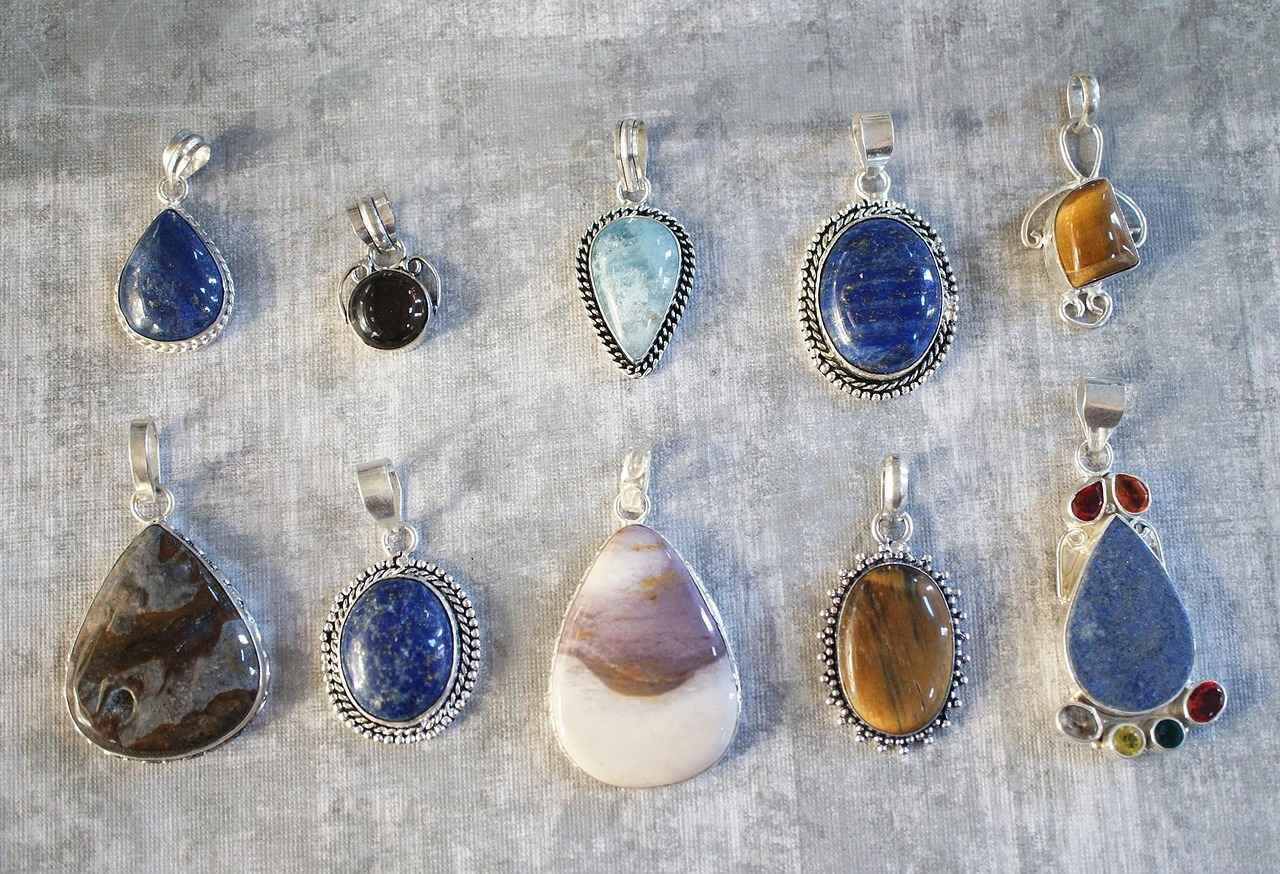
How to Prepare Your Jewelry for Sale?
Preparing your jewelry for sale is a crucial step that can significantly enhance its appeal and value. By taking the time to clean, repair, and present your pieces effectively, you not only attract potential buyers but also maximize the offers you receive. Below are essential steps to ensure your jewelry is ready for the market.
Why is Cleaning Your Jewelry Important?
Cleaning your jewelry is the first step in the preparation process. Over time, dirt and oils can accumulate, dulling the shine of your pieces. A thorough cleaning can restore their original luster, making them more appealing to buyers. Here are some effective cleaning methods:
- Gentle Soap and Water: For most jewelry, a mixture of warm water and mild soap can effectively remove grime. Use a soft brush to reach intricate details.
- Professional Cleaning: For high-value pieces or those with delicate stones, consider taking your jewelry to a professional jeweler for cleaning.
How to Repair Damaged Jewelry?
Before listing your jewelry for sale, inspect it for any damage. Common issues include loose stones, broken clasps, or tarnished metal. Addressing these problems can significantly increase the value of your items. Here are some options:
- DIY Repairs: Minor repairs, such as tightening a loose stone or replacing a clasp, can often be done at home with the right tools.
- Professional Repairs: For more complex issues, hiring a professional jeweler can ensure that the repair is done correctly, preserving the integrity of the piece.
Creating an Attractive Presentation
Once your jewelry is clean and repaired, the next step is to present it in the best light possible. An attractive presentation can capture buyers’ attention and make a lasting impression. Here are some tips:
- Quality Photography: Use high-resolution images taken in good lighting to showcase your jewelry. Highlight different angles and details to give potential buyers a comprehensive view.
- Attractive Packaging: Consider using elegant boxes or pouches that enhance the perceived value of your jewelry. Presentation matters, especially in online sales.
How to Write Compelling Descriptions?
In addition to visuals, well-crafted descriptions are essential. Provide detailed information about the materials, size, and unique features of each piece. Highlight any history or sentimental value, as this can resonate with buyers. Use descriptive language to evoke emotion and create a connection.
Utilizing Online Platforms
When preparing to sell your jewelry, consider the platform where you will list your items. Online marketplaces offer a vast audience, but ensure that you follow their guidelines for listings. Share your cleaned and repaired jewelry along with high-quality images and detailed descriptions to attract potential buyers.
Final Touches Before Selling
Before finalizing your sale, double-check that all pieces are in excellent condition. Consider having a friend or family member review your presentation and descriptions to provide feedback. This can help you identify any areas for improvement.
By taking the time to clean, repair, and present your jewelry thoughtfully, you can significantly enhance its appeal and value. Remember, first impressions matter, and a well-prepared piece is more likely to attract serious buyers and maximize your offers.
Cleaning and Repairing Your Jewelry
is a crucial step in the process of selling your precious items. Before listing your jewelry for sale, taking the time to enhance its appearance can make a significant difference in attracting potential buyers. Here’s how you can effectively clean and repair your jewelry to maximize its appeal.
Cleaning your jewelry not only restores its natural shine but also removes any dirt, oil, or tarnish that may have accumulated over time. A well-maintained piece appears more appealing and can create a positive first impression on potential buyers. Simple cleaning techniques can often be performed at home, such as:
- Soaking in Soap and Water: A mixture of mild dish soap and warm water can help loosen dirt.
- Using a Soft Brush: A soft-bristled toothbrush can gently scrub intricate areas without causing damage.
- Polishing Cloth: A microfiber cloth can be used to buff the jewelry to a brilliant shine.
Repairing any damage is equally important as cleaning. Buyers are often wary of pieces that show signs of wear and tear. Addressing these issues can significantly increase the chances of a successful sale. Consider the following common repairs:
- Replacing Missing Stones: If your jewelry features gemstones, ensure that all stones are intact. Replacing missing stones can greatly enhance the value.
- Fixing Broken Chains: A broken chain can deter buyers. Repairing or replacing it can restore functionality.
- Resizing Rings: If a ring is too big or too small, having it resized can make it more appealing to potential buyers.
While some repairs can be done at home, others may require the expertise of a professional jeweler. For intricate pieces or valuable items, it is advisable to seek professional help. A jeweler can ensure that repairs are done correctly, maintaining the integrity of the piece. When choosing a jeweler, look for:
- Certifications: Ensure they have the necessary qualifications and experience.
- Positive Reviews: Check online reviews or ask for recommendations.
Once your jewelry is cleaned and repaired, presentation becomes key. A well-presented piece can captivate buyers’ attention. Consider the following tips:
- High-Quality Photography: Use natural light and a good camera to capture your jewelry from multiple angles.
- Attractive Packaging: Presenting your jewelry in a beautiful box or pouch can enhance its perceived value.
In conclusion, before selling is essential for maximizing its attractiveness and value. By taking the time to restore its shine and fix any damage, you can significantly improve your chances of achieving a profitable sale. Remember that a well-maintained piece not only looks better but also instills confidence in potential buyers, leading to a smoother and more successful selling experience.
Creating an Attractive Presentation
When it comes to selling jewelry, the presentation of your pieces plays a crucial role in attracting potential buyers. A well-presented piece can significantly enhance its perceived value and increase the likelihood of a successful sale. Here are some essential tips on how to create an attractive presentation for your jewelry.
The first impression is often the last impression. Attractive packaging and high-quality photographs can capture buyers’ attention and make your jewelry stand out in a crowded market. Whether you are selling online or in-person, the way you present your jewelry can influence a buyer’s perception of its value.
- Invest in Good Lighting: Natural light is ideal for photographing jewelry. It highlights the details and colors of your pieces.
- Use a Quality Camera: A good camera can make a significant difference in the clarity and quality of your images. Consider using a DSLR or a high-quality smartphone camera.
- Show Different Angles: Capture multiple angles of your jewelry to give potential buyers a comprehensive view. Close-ups can also highlight intricate details.
Packaging is more than just a protective layer; it is part of the overall presentation. Here are some tips for creating attractive packaging:
- Choose Quality Materials: Use sturdy boxes or pouches that reflect the quality of your jewelry. Consider using eco-friendly materials to appeal to environmentally conscious buyers.
- Add Personal Touches: Include a handwritten thank-you note or a care instruction card. Such gestures can create a connection with your buyers.
- Brand Your Packaging: If you have a brand, incorporate your logo and brand colors into the packaging design. This not only enhances the presentation but also builds brand recognition.
For online listings, ensure your jewelry is displayed prominently. Use a clean, uncluttered background to draw attention to the piece. If selling in person, consider using a jewelry stand or display that complements your pieces and highlights their features.
Social media platforms are excellent tools for showcasing your jewelry. Engage with your audience by posting high-quality images, behind-the-scenes content, and styling tips. Utilize platforms like Instagram and Pinterest, which are visually driven, to reach a larger audience.
Every piece of jewelry has a story. Sharing the history or inspiration behind your jewelry can create an emotional connection with potential buyers. Highlight unique features, such as the craftsmanship or the materials used, to make your presentation more engaging.
In summary, creating an attractive presentation for your jewelry involves more than just aesthetics. It requires careful consideration of photography, packaging, and marketing strategies. By putting effort into how you present your pieces, you can significantly enhance their appeal and increase your chances of achieving the best possible price.

What Legal Considerations Should You Keep in Mind?
When selling jewelry, understanding the legal considerations involved is crucial for a smooth and successful transaction. Not only does it protect you as a seller, but it also builds trust with potential buyers. This section delves into the essential legal aspects you should keep in mind to ensure compliance and safeguard your interests.
Compliance with local laws is vital when selling jewelry. Regulations can vary significantly based on your location, impacting aspects such as ownership, authenticity, and even the sale process itself. Failing to adhere to these laws may lead to legal repercussions, including fines or even criminal charges.
Establishing clear ownership and provenance is essential when selling jewelry. Providing documentation, such as receipts or certificates of authenticity, can enhance buyer confidence. Buyers are more likely to invest in pieces that have a verified history. This not only reassures them of the legitimacy of the jewelry but also increases its value.
It is important to be aware of any potential tax implications when selling jewelry. Depending on your location, profits from sales may be subject to capital gains tax. It is advisable to consult with a tax professional to understand your obligations and ensure that you are compliant with local tax laws.
Familiarizing yourself with consumer protection laws is also essential. These laws are designed to protect buyers from fraud and misrepresentation. Transparency in your selling practices, such as clearly stating the condition of the jewelry and disclosing any repairs or alterations, can help you avoid legal issues.
When selling used jewelry, there may be specific legal requirements you need to fulfill. These can include:
- Obtaining necessary permits or licenses.
- Providing a written receipt for the transaction.
- Disclosing any known defects or repairs.
Ensuring compliance with these requirements can protect you from potential disputes and enhance your credibility as a seller.
If you find yourself facing legal issues during the selling process, it is crucial to seek legal advice promptly. Consulting with a lawyer who specializes in consumer law or jewelry sales can help you navigate any complications and protect your rights.
In summary, understanding the legal aspects of selling jewelry is not just about compliance, but also about building trust and ensuring a successful transaction. By being informed and prepared, you can enhance your selling experience and avoid potential pitfalls that may arise.
Understanding Ownership and Provenance
When it comes to selling jewelry, establishing clear ownership and provenance is crucial for enhancing buyer confidence. Buyers want to know that they are making a legitimate purchase, especially when it comes to valuable items. Providing documentation of purchase, such as receipts or appraisals, can significantly reassure potential buyers about the authenticity and history of the jewelry.
The importance of ownership and provenance cannot be overstated. Jewelry with a well-documented history not only commands higher prices but also attracts more serious buyers. This is particularly true for pieces that may have been owned by notable individuals or have historical significance. In such cases, having a clear chain of ownership can add substantial value and appeal.
To effectively convey ownership, consider the following:
- Gather Documentation: Collect any relevant documents that prove the purchase or appraisal of your jewelry. This includes original receipts, certificates of authenticity, and any appraisals conducted by professional jewelers.
- Provide a Provenance Statement: Create a detailed statement that outlines the history of the piece. Include information about previous owners, the designer or brand, and any significant events related to the jewelry.
- Highlight Unique Features: If your jewelry has unique characteristics or craftsmanship, be sure to point these out. This can help potential buyers appreciate its value and history.
In addition to documentation, consider how you present your jewelry. High-quality photographs that capture the piece from multiple angles can significantly enhance its appeal. When posting online, include detailed descriptions that incorporate the provenance information. This not only informs potential buyers but also builds trust.
Furthermore, being open to questions about the piece can foster a sense of transparency. Buyers often appreciate sellers who are knowledgeable and willing to share information. This interaction can further enhance buyer confidence and lead to a smoother transaction.
Ultimately, the goal is to create a compelling narrative around your jewelry. By effectively communicating its ownership and provenance, you can elevate its perceived value and increase the likelihood of a successful sale. Remember, a well-documented piece not only reassures buyers but also sets the stage for a rewarding selling experience.
In conclusion, understanding the importance of ownership and provenance is vital in the jewelry selling process. By providing clear documentation and engaging with potential buyers, you can build trust and enhance the overall selling experience.
Tax Implications of Selling Jewelry
When it comes to selling jewelry, one crucial aspect that often gets overlooked is the tax implications associated with the sale. Understanding these implications can save you from unexpected financial burdens down the line. In many jurisdictions, the profit made from selling jewelry is considered a capital gain, which may be subject to taxation. Therefore, it’s essential to be informed and prepared.
Capital gains tax is a tax on the profit realized from the sale of non-inventory assets, including jewelry. The amount of tax you owe depends on several factors, including:
- Duration of Ownership: If you’ve owned the jewelry for more than a year, it may qualify for long-term capital gains tax rates, which are typically lower than short-term rates.
- Profit Amount: The total profit from the sale will determine your tax bracket and how much you owe.
- Your Tax Residency: Different regions have varying laws regarding capital gains tax, so your location can significantly impact your obligations.
Given the complexities surrounding tax laws, consulting a tax professional is highly recommended. They can provide personalized advice based on your unique situation and help you understand:
- How to accurately calculate your capital gains.
- Any deductions or exemptions you may qualify for.
- The best practices for reporting your sale on your tax return.
While it’s essential to comply with tax laws, there are strategies to help minimize your tax liability:
- Keep Detailed Records: Document all purchases, appraisals, and sales. This information can be invaluable when calculating your capital gains.
- Consider Timing: If possible, plan your sale strategically to take advantage of lower tax rates.
- Gift Jewelry: In some cases, gifting jewelry to family members before selling can reduce tax implications, but be sure to understand the gift tax rules.
Failing to report the sale of your jewelry can lead to severe consequences, including:
- Penalties: The IRS or your local tax authority may impose fines for underreporting income.
- Audits: Not reporting can trigger an audit, leading to further scrutiny of your financial situation.
In conclusion, being aware of the tax implications when selling jewelry is vital for ensuring a smooth transaction. By understanding capital gains tax, consulting a tax professional, and implementing strategies to minimize your tax liability, you can maximize your profits and avoid potential pitfalls. Remember, knowledge is power when it comes to navigating the financial aspects of selling your jewelry.

How to Negotiate the Best Price?
Negotiating the best price for your jewelry can be a game changer in maximizing your profits. Effective negotiation skills can significantly influence your selling price. By understanding market value and being prepared to discuss offers confidently, you can secure better deals. This section will explore essential strategies to enhance your negotiation abilities and ensure you get the best price for your jewelry.
Negotiation is not just about haggling over price; it’s about creating a win-win situation for both the seller and the buyer. Understanding the art of negotiation can lead to a more satisfactory transaction, where both parties feel valued. This is especially crucial in the jewelry market, where emotions and perceptions heavily influence buying decisions.
To negotiate effectively, you must be aware of current market trends. Researching similar jewelry pieces can provide valuable insights into pricing strategies. Look for:
- Recent sales data for comparable items.
- Market demand for specific styles or brands.
- Seasonal trends that may affect pricing.
By arming yourself with this information, you can confidently justify your asking price during negotiations.
Here are some proven negotiation techniques to help you achieve the best price for your jewelry:
- Be Assertive: Clearly state your price and the reasons behind it. Confidence can often sway a buyer’s decision.
- Listen Actively: Pay attention to the buyer’s concerns and objections. This will help you address their needs effectively.
- Be Flexible: While you should have a target price, being open to negotiation can lead to a mutually beneficial agreement.
- Know When to Walk Away: If the offer does not meet your expectations, be prepared to decline. This shows you value your piece and are not desperate to sell.
Establishing a good relationship with potential buyers can significantly enhance your negotiation outcomes. Here are some tips:
- Be Friendly and Approachable: A warm demeanor can make buyers more comfortable and willing to negotiate.
- Share the Story: If your jewelry has a unique history or sentimental value, sharing this can create an emotional connection, making buyers more inclined to pay a premium.
Like any skill, negotiation improves with practice. Consider role-playing scenarios with friends or family to boost your confidence. Additionally, attending workshops or reading books on negotiation can provide new insights and techniques.
Avoiding common pitfalls can streamline your selling process:
- Being Unprepared: Entering negotiations without knowledge of your jewelry’s value can weaken your position.
- Overvaluing Your Piece: While your jewelry may hold sentimental value, it’s crucial to remain objective about its market worth.
- Rushing the Process: Take your time to negotiate. Hasty decisions can lead to unfavorable outcomes.
In conclusion, mastering negotiation skills is vital for anyone looking to sell jewelry effectively. By understanding market trends, employing effective techniques, and avoiding common mistakes, you can enhance your chances of securing the best price possible.
Understanding Market Trends
is essential for anyone looking to sell jewelry effectively. By keeping an eye on the latest developments in the jewelry market, you can make informed decisions regarding pricing and sales strategies. This knowledge not only helps you gauge the appropriate price for your items but also equips you with the tools necessary to negotiate better deals.
Market trends provide a snapshot of consumer behavior, preferences, and economic factors that influence jewelry sales. By understanding these trends, you can:
- Set Competitive Prices: Knowing the current demand for similar pieces allows you to price your jewelry competitively.
- Identify Potential Buyers: Understanding who is buying what can help you target your marketing efforts more effectively.
- Enhance Negotiation Power: Being aware of market fluctuations can give you leverage in negotiations, allowing you to justify your asking price.
Researching market trends involves several strategies:
- Online Marketplaces: Browse platforms like eBay, Etsy, and Amazon to see what similar jewelry pieces are selling for. This can provide a benchmark for your pricing.
- Industry Reports: Consult jewelry industry reports and publications that analyze sales trends, consumer preferences, and economic forecasts.
- Social Media Insights: Platforms like Instagram and Pinterest can reveal what styles and types of jewelry are currently trending.
Researching similar pieces is crucial for establishing a benchmark in negotiations. Here’s how to do it effectively:
1. Identify Key Features: - Material (gold, silver, platinum) - Gemstone type and quality - Brand and designer reputation - Condition (new, used, vintage)2. Compare Prices: - Look for sold listings to see what buyers have recently paid. - Note the average price range for similar items.3. Keep Track of Changes: - Monitor how prices fluctuate over time to stay updated on market dynamics.
Once you have gathered sufficient information about current market trends and similar pieces, you can effectively use this data in negotiations:
- Present Your Research: Share your findings with potential buyers to justify your asking price.
- Be Flexible: Use your knowledge to adjust your price based on buyer feedback while ensuring you don’t undervalue your piece.
- Stay Confident: Knowing the market trends can increase your confidence during negotiations, making it easier to stand firm on your price.
In summary, understanding market trends is a vital component of selling jewelry successfully. By staying informed and researching similar pieces, you can not only set appropriate prices but also enhance your negotiation skills, ultimately leading to a more profitable selling experience.
Effective Negotiation Techniques
When it comes to selling your jewelry, mastering can be the key to maximizing your sale price. Understanding how to negotiate confidently and strategically can lead to a more profitable transaction. Here, we will explore various methods to enhance your negotiation skills and ensure you get the best possible deal.
Negotiation skills are vital for several reasons:
- Maximizing Profit: Effective negotiation can significantly increase your final sale price.
- Building Relationships: Good negotiation fosters trust and rapport with buyers.
- Gaining Confidence: The more you practice negotiation, the more confident you become in your selling abilities.
Implementing specific strategies can greatly improve your negotiation outcomes:
- Know Your Worth: Before entering negotiations, research the market value of your jewelry. This knowledge empowers you to stand firm on your asking price.
- Be Assertive Yet Flexible: While it’s crucial to advocate for your price, being open to discussion can create a more favorable environment for negotiation.
- Prepare to Walk Away: If the offer doesn’t meet your expectations, be willing to walk away. This tactic often encourages buyers to reconsider their offer.
Recognizing how buyers think can enhance your negotiation strategy:
- Emotional Appeal: Buyers often make decisions based on emotion. Highlight the sentimental value or unique features of your jewelry to engage buyers.
- Scarcity Principle: If your piece is rare or unique, emphasize this point. Buyers are often more willing to pay a premium for something they believe is hard to find.
Clear communication is essential during negotiations:
- Ask Open-Ended Questions: Encourage dialogue by asking questions that require more than a simple yes or no. This can provide insights into the buyer’s motivations and flexibility.
- Listen Actively: Pay attention to the buyer’s responses. Understanding their needs and concerns can help you tailor your negotiation approach.
Like any skill, negotiation improves with practice. Consider role-playing scenarios with friends or family to build your confidence. You can also observe experienced negotiators in action, learning from their techniques and strategies.
In summary, employing effective negotiation techniques can significantly enhance your selling experience. By being informed, assertive, and flexible, you can secure a better price for your jewelry. Remember, the art of negotiation is not just about winning; it’s about finding a mutually beneficial agreement that satisfies both parties.
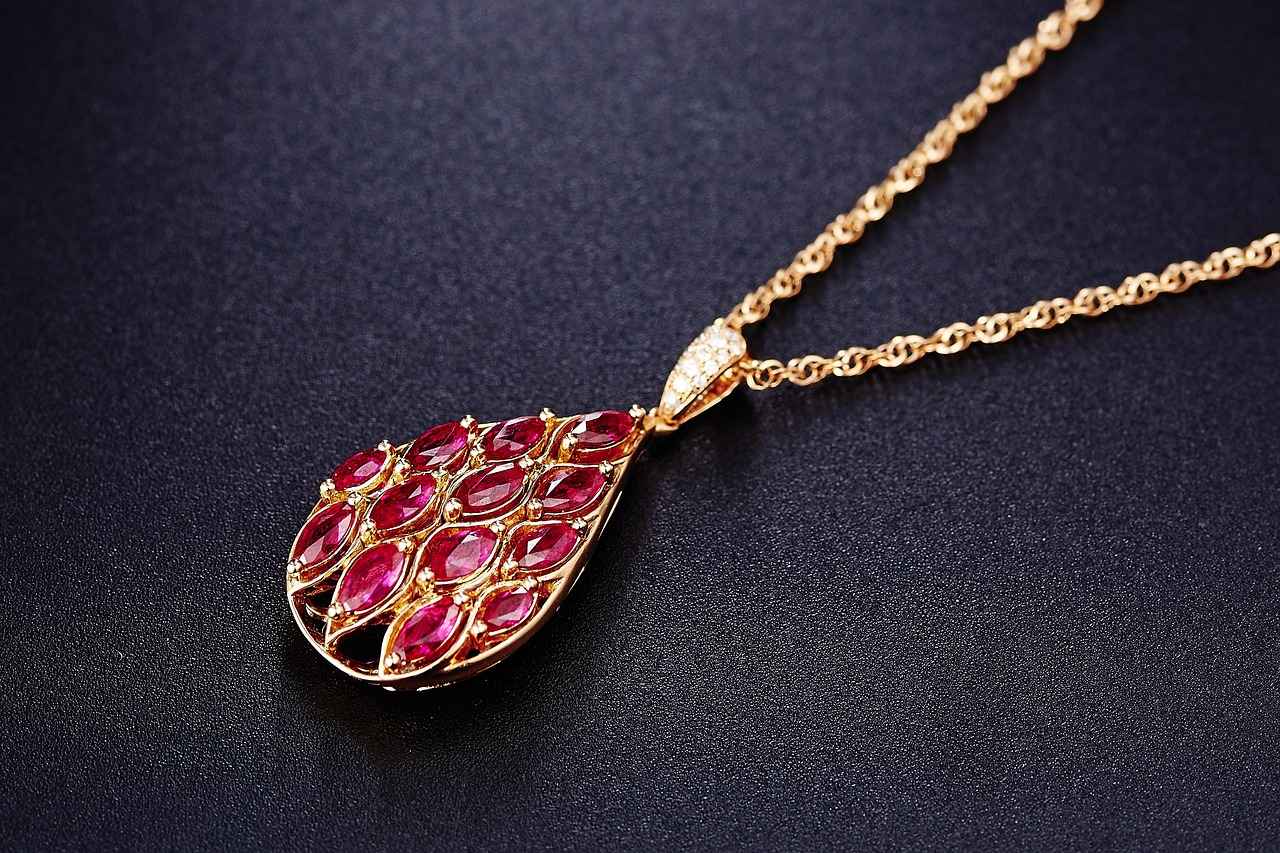
What Are Common Mistakes to Avoid When Selling Jewelry?
When it comes to selling jewelry, understanding the pitfalls that many sellers encounter is essential for maximizing profits and ensuring a smooth transaction. Avoiding common mistakes can streamline the selling process and enhance profitability. By being informed and prepared, you can dodge the traps that often ensnare less experienced sellers.
Recognizing the importance of avoiding common mistakes is the first step towards a successful sale. Mistakes can lead to financial losses, wasted time, and unnecessary stress. Sellers who are aware of potential pitfalls are better equipped to navigate the complexities of the jewelry market, ensuring they receive the best possible price for their items.
- Underpricing Your Jewelry: One of the most common errors is underpricing. Many sellers, eager to make a quick sale, price their jewelry too low, resulting in significant losses. It’s crucial to conduct thorough research on market value before setting a price.
- Neglecting to Get an Appraisal: Skipping the appraisal process can lead to undervaluing your jewelry. A professional appraisal not only provides an accurate value but also adds credibility to your sale.
- Failing to Market Effectively: Simply listing your jewelry without a marketing strategy can limit exposure. Utilize social media, online marketplaces, and local networks to broaden your reach and attract interested buyers.
- Not Cleaning or Repairing Pieces: Selling jewelry in less-than-perfect condition can deter potential buyers. A simple cleaning or necessary repairs can significantly enhance the appeal of your items.
- Ignoring Legal Considerations: Understanding the legal aspects of selling jewelry is vital. Ensure you have documentation proving ownership and authenticity, as this can instill confidence in buyers.
Preparation is key to avoiding common selling mistakes. Start by researching the current market trends and values for similar pieces. This knowledge equips you to set a realistic price that reflects your jewelry’s worth. Additionally, consider obtaining a professional appraisal to bolster your selling position.
Effective marketing can significantly impact your selling success. Begin by taking high-quality photographs of your jewelry, showcasing it from multiple angles. Write detailed descriptions that highlight unique features, materials, and craftsmanship. Utilize online platforms and social media to reach a broader audience, and don’t hesitate to engage with potential buyers to answer their questions and build trust.
Negotiation is a critical skill when selling jewelry. Being prepared to discuss offers confidently can lead to better deals. Understand your jewelry’s market value and be ready to justify your asking price. Remember, it’s a negotiation, so be flexible yet firm in your expectations.
One of the best ways to avoid common selling mistakes is to learn from the experiences of others. Read testimonials and reviews from previous sellers, and consider joining online forums or local groups focused on jewelry selling. Engaging with a community can provide valuable insights and tips that can enhance your selling strategy.
In conclusion, being aware of the common mistakes when selling jewelry can save you time, money, and frustration. By doing your homework, preparing adequately, and employing effective marketing and negotiation strategies, you can ensure a successful sale that meets your expectations.
Underpricing Your Jewelry
When it comes to selling your jewelry, one of the most critical mistakes you can make is underpricing your pieces. This common error can lead to significant financial losses, leaving you with far less than your jewelry is truly worth. To avoid this pitfall, it is essential to conduct thorough research and understand the various factors that contribute to the value of your items.
Underpricing can stem from a lack of knowledge about the jewelry market or a desire for a quick sale. However, this approach can backfire, resulting in missed opportunities for higher profits. Jewelry is often an emotional asset, and its value can fluctuate based on trends, demand, and condition. By pricing your jewelry too low, you not only diminish its perceived value but also undermine your potential earnings.
To ensure that your asking price reflects the true value of your jewelry, consider the following steps:
- Research Similar Items: Look for comparable pieces online to gauge current market prices. Websites like Etsy or eBay can provide insights into what similar items are selling for.
- Get a Professional Appraisal: Hiring a qualified appraiser can give you an expert evaluation of your jewelry’s worth, taking into account its unique characteristics.
- Consider Market Trends: Stay informed about current trends in the jewelry market. Styles and materials that are popular today may not hold the same value in the future.
Understanding the factors that influence jewelry value is crucial for setting the right price. Here are some key elements to consider:
- Material Quality: The type of metal and gemstones used can significantly impact value. For example, gold and platinum often command higher prices than silver.
- Brand Reputation: Renowned brands often have a premium attached to their pieces, making them more valuable in the resale market.
- Condition: The overall condition of the jewelry, including any wear or damage, plays a vital role in its valuation.
To prevent underpricing, take the time to gather as much information as possible before listing your jewelry for sale. Here are some practical tips:
- Set a Minimum Price: Determine a minimum price you are willing to accept before listing your jewelry. This will help you avoid selling for less than you believe it is worth.
- Be Patient: Selling jewelry can take time. Don’t rush into a sale just because you feel pressured; waiting for the right buyer can lead to better offers.
- Engage with Potential Buyers: Communicate with interested buyers to understand their expectations and willingness to pay. This can provide valuable insights into pricing.
In conclusion, underpricing your jewelry can significantly impact your financial return. By conducting thorough research, understanding the factors that determine value, and employing strategic selling techniques, you can ensure that your asking price truly reflects the worth of your jewelry. Remember, taking the time to educate yourself about the market and your pieces will ultimately lead to a more profitable sale.
Neglecting to Market Your Jewelry
In today’s competitive marketplace, failing to market your jewelry effectively can severely limit your exposure to potential buyers. To maximize your selling potential, it is essential to adopt a proactive approach to marketing. Here are some strategies to ensure your jewelry reaches the right audience.
Marketing your jewelry is crucial because it directly impacts your ability to attract buyers and achieve the best price. Without proper marketing, even the most exquisite pieces can go unnoticed. By leveraging various marketing channels, you can increase visibility and create demand for your jewelry.
Social media platforms like Instagram, Facebook, and Pinterest are invaluable tools for showcasing your jewelry. With their visual nature, these platforms allow you to create stunning posts that highlight your pieces. Here are some tips for effective social media marketing:
- High-Quality Images: Use clear, well-lit photos that capture the details of your jewelry.
- Engaging Captions: Write captivating descriptions that tell the story behind each piece.
- Hashtags: Utilize relevant hashtags to reach a broader audience and connect with potential buyers.
Online marketplaces such as Etsy, eBay, and Amazon provide excellent platforms for selling jewelry. These sites offer access to a global audience and can significantly increase your chances of making a sale. Consider these factors when listing your jewelry:
- Competitive Pricing: Research similar items to set a competitive price.
- Detailed Descriptions: Provide thorough descriptions, including materials, dimensions, and care instructions.
- Customer Reviews: Encourage satisfied buyers to leave positive feedback to build trust with future customers.
Word-of-mouth marketing remains one of the most effective forms of promotion. Encourage friends, family, and satisfied customers to share their experiences and recommend your jewelry to others. Consider hosting trunk shows or pop-up events where people can see your pieces in person and spread the word.
Building relationships with local jewelers and artisans can also enhance your marketing efforts. They may be willing to promote your jewelry in their stores or collaborate on events. Attend local craft fairs, jewelry shows, and community events to network and showcase your pieces.
Establishing a personal website or blog can serve as a central hub for your jewelry marketing efforts. Here, you can:
- Showcase Your Collection: Display your jewelry with high-quality images and detailed descriptions.
- Share Your Story: Connect with potential buyers by sharing your journey as a jewelry maker or seller.
- Offer Exclusive Deals: Encourage visitors to subscribe to your newsletter for special promotions or new collection announcements.
In conclusion, neglecting to market your jewelry can significantly hinder your selling potential. By utilizing social media, online marketplaces, word-of-mouth, and networking, you can broaden your reach and attract interest in your pieces. The more effort you put into marketing, the more likely you are to connect with potential buyers and achieve the best price for your jewelry.
Frequently Asked Questions
- What factors should I consider when valuing my jewelry?
When valuing your jewelry, consider the metal type, gemstone quality, brand reputation, and current market demand. Each of these factors plays a crucial role in determining the final selling price.
- How can I find a trustworthy appraiser for my jewelry?
To find a trustworthy appraiser, look for certifications, experience, and positive reviews. A qualified appraiser will provide a credible evaluation, ensuring you get a fair price for your piece.
- Where is the best place to sell my used jewelry?
Choosing the right selling platform can maximize your profit. Consider options like online marketplaces for a wider audience, local jewelers for immediate transactions, or auction houses for high-value pieces.
- What should I do to prepare my jewelry for sale?
To prepare your jewelry for sale, clean it thoroughly, make necessary repairs, and present it well. A clean and well-maintained piece will attract more potential buyers and can lead to higher offers.
- Are there legal considerations I need to keep in mind?
Yes, it’s important to understand local laws regarding ownership and authenticity. Providing documentation of purchase or appraisal can enhance buyer confidence and ensure a smooth transaction.
- How can I effectively negotiate the best price?
To negotiate effectively, stay informed about market trends and be prepared to discuss offers confidently. Being assertive yet flexible during negotiations can help you achieve a better deal.
- What common mistakes should I avoid when selling jewelry?
Common mistakes include underpricing your jewelry and neglecting to market it effectively. Always conduct thorough research to set a fair price and utilize various platforms to reach potential buyers.

